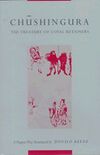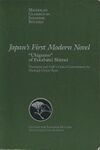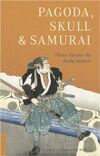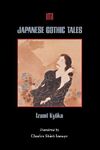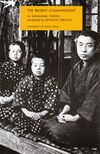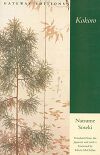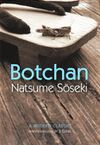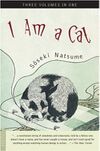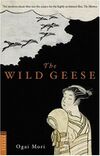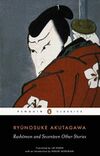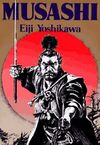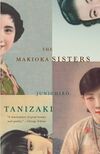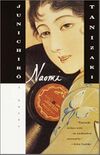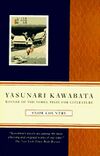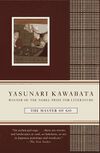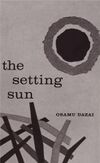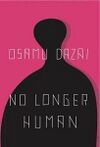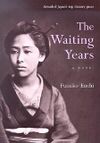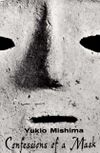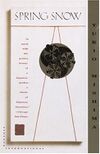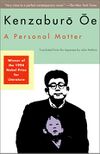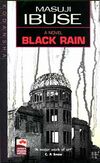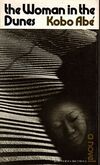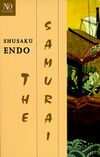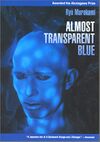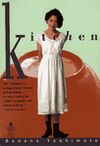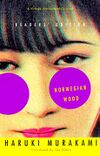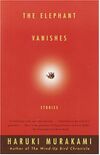Japanese: Difference between revisions
From /lit/ Wiki
Jump to navigationJump to search
imported>Sriq Created page with " ==='''Classical Literature (until 1600's)''' …" |
imported>Ukodus |
||
| (12 intermediate revisions by 3 users not shown) | |||
| Line 1: | Line 1: | ||
==='''Classical Literature (until 1600's)''' === | ==='''Classical Literature (until 1600's)''' === | ||
{| border="1" cellpadding="1" cellspacing="1" style="width: 600px;" | |||
| style="text-align: center;"|'''Title''' | |||
| style="text-align: center;"|'''Author''' | |||
| style="text-align: center;"|'''Year''' | |||
| style="text-align: center;"|'''Description''' | |||
| style="text-align: center;"|'''Cover''' | |||
|- | |||
| style="text-align: center;"|The Gossamer Years | |||
| style="text-align: center;"|Mother of Michitsuna | |||
| style="text-align: center;"|974 | |||
| | |||
|[[File:The_Gossamer_Years.jpg|thumb|98px]] | |||
|- | |||
| style="text-align: center;"|The Pillow Book | |||
| style="text-align: center;"|Sei Shonagon | |||
| style="text-align: center;"|1002 | |||
| | |||
|[[File:The_Pillow_Book.jpg|thumb|98px]] | |||
|- | |||
| style="text-align: center;"|The Tale of Genji | |||
| style="text-align: center;"|Murasaki Shikibu | |||
| style="text-align: center;"|1021 | |||
| | |||
|[[File:The_Tale_Of_Genji.jpg|thumb|98px]] | |||
|- | |||
| style="text-align: center;"|The Tales of Ise | |||
| style="text-align: center;"|Anonymous | |||
| style="text-align: center;"|~ | |||
| | |||
|[[File:The_Tales_Of_Ise.jpg|thumb|98px]] | |||
|- | |||
| style="text-align: center;"|Hojoki | |||
| style="text-align: center;"|Kamo no Chomei | |||
| style="text-align: center;"|1212 | |||
| | |||
|[[File:Hojoki.jpg|thumb|98px]] | |||
|- | |||
| style="text-align: center;"|Essays in Idleness | |||
| style="text-align: center;"|Yoshida Kenko | |||
| style="text-align: center;"|1330 | |||
| | |||
|[[File:Essays_In_Idleness.jpg|thumb|98px]] | |||
|- | |||
| style="text-align: center;"|The Tale of The Heike | |||
| style="text-align: center;"|Anonymous | |||
| style="text-align: center;"|1371 | |||
| | |||
|[[File:The_Tale_Of_The_Heike.jpg|thumb|98px]] | |||
|} | |||
==='''Edo Period (1603-1868)''' === | ==='''Edo Period (1603-1868)''' === | ||
{| border="1" cellpadding="1" cellspacing="1" style="width: 600px;" | |||
! style="text-align: center;"|'''Title''' | |||
! style="text-align: center;"|'''Author''' | |||
! style="text-align: center;"|'''Year''' | |||
! style="text-align: center;"|'''Pages''' | |||
! style="text-align: center;"|'''Description''' | |||
! style="text-align: center;"|'''Cover''' | |||
|- | |||
| style="text-align: center;"|Life of an Amorous Woman | |||
| style="text-align: center;"|Saikaku Ihara | |||
| style="text-align: center;"|1686 | |||
| style="text-align: center;"|403 | |||
| | |||
|[[File:Life_of_an_Amorous_Woman.jpg|center|100px]] | |||
|- | |||
| style="text-align: center;"|Hagakure: The Book of the Samurai | |||
| style="text-align: center;"|Yamamoto Tsunetomo | |||
| style="text-align: center;"|1716 | |||
| style="text-align: center;"|180 | |||
| | |||
|[[File:Hagakure.jpg|center|100px]] | |||
|- | |||
| style="text-align: center;"|Four Major Plays | |||
| style="text-align: center;"|Chikamatsu Monzaemon | |||
| style="text-align: center;"|~1720 | |||
| style="text-align: center;"|220 | |||
| | |||
|[[File:Four_Major_Plays_of_Chikamatsu.jpg|center|100px]] | |||
|- | |||
| style="text-align: center;"|Chushingura | |||
| style="text-align: center;"|Takedo Izumo, Miyoshi Shoraku, Namiki Senryuu | |||
| style="text-align: center;"|1748 | |||
| style="text-align: center;"|183 | |||
| | |||
|[[File:Chushingura.jpg|center|100px]] | |||
|- | |||
| style="text-align: center;"|Tales of Moonlight and Rain | |||
| style="text-align: center;"|Ueda Akinari | |||
| style="text-align: center;"|1776 | |||
| style="text-align: center;"|248 | |||
| | |||
|[[File:Tales_of_Moonlight_and_Rain.jpg|center|100px]] | |||
|} | |||
==='''Modern Literature (1868-1945)''' === | ==='''Modern Literature (1868-1945)''' === | ||
| Line 18: | Line 109: | ||
| style="text-align: center;"|381 | | style="text-align: center;"|381 | ||
| | | | ||
| | |[[File:Ukigumo.jpg|center|100px]] | ||
|- | |- | ||
| style="text-align: center;"|Pagoda, Skull, and Samurai | | style="text-align: center;"|Pagoda, Skull, and Samurai | ||
| Line 25: | Line 116: | ||
| style="text-align: center;"|280 | | style="text-align: center;"|280 | ||
| | | | ||
|[[File:Pagoda,_Skull_and_Samurai.jpg| | |[[File:Pagoda,_Skull_and_Samurai.jpg|center|100px]] | ||
|- | |- | ||
| style="text-align: center;"|In the Shade of Spring Leaves | | style="text-align: center;"|In the Shade of Spring Leaves | ||
| Line 32: | Line 123: | ||
| style="text-align: center;"|388 | | style="text-align: center;"|388 | ||
| | | | ||
|[[File:In_the_Shade_of_Spring_Leaves.jpg| | |[[File:In_the_Shade_of_Spring_Leaves.jpg|center|100px]] | ||
|- | |- | ||
| style="text-align: center;"|Japanese Gothic Tales | | style="text-align: center;"|Japanese Gothic Tales | ||
| Line 39: | Line 130: | ||
| style="text-align: center;"|212 | | style="text-align: center;"|212 | ||
| | | | ||
|[[File:Japanese_Gothic_Tales.jpg| | |[[File:Japanese_Gothic_Tales.jpg|center|100px]] | ||
|- | |- | ||
| style="text-align: center;"|The Broken Commandment | | style="text-align: center;"|The Broken Commandment | ||
| Line 46: | Line 137: | ||
| style="text-align: center;"|276 | | style="text-align: center;"|276 | ||
| | | | ||
| | |[[File:The_Broken_Commandment.jpg|center|100px]] | ||
|- | |- | ||
| style="text-align: center;"|The Quilt and Other Stories | | style="text-align: center;"|The Quilt and Other Stories | ||
| Line 53: | Line 144: | ||
| style="text-align: center;"|204 | | style="text-align: center;"|204 | ||
| | | | ||
| | |[[File:The_Quilt_and_Other_Stories.jpg|center|100px]] | ||
|- | |- | ||
| style="text-align: center;"|The Tales of Kenji Miyazawa | | style="text-align: center;"|The Tales of Kenji Miyazawa | ||
| style="text-align: center;"|Kenji Miyazawa | | style="text-align: center;"|Kenji Miyazawa | ||
| style="text-align: center;"| | | style="text-align: center;"|1924 | ||
| style="text-align: center;"|216 | |||
| | | | ||
|[[File:The_Tales_of_Kenji_Miyazawa.jpg|center|100px]] | |||
|- | |||
| style="text-align: center;"|Kokoro | |||
| style="text-align: center;"|Natsume Soseki | |||
| style="text-align: center;"|1914 | |||
| style="text-align: center;"|248 | |||
| | | | ||
|[[File:Kokoro.jpg|center|100px]] | |||
|- | |||
| style="text-align: center;"|Botchan | |||
| style="text-align: center;"|Natsume Soseki | |||
| style="text-align: center;"|1906 | |||
| style="text-align: center;"|176 | |||
| | | | ||
|[[File:Botchan.jpg|center|100px]] | |||
|- | |- | ||
| style="text-align: center;"| | | style="text-align: center;"|I am a Cat | ||
| style="text-align: center;"|Natsume Soseki | | style="text-align: center;"|Natsume Soseki | ||
| style="text-align: center;"|1905 | |||
| style="text-align: center;"|656 | |||
| | | | ||
|[[File:I_Am_a_Cat.jpg|center|100px]] | |||
|- | |||
| style="text-align: center;"|The Wild Geese | |||
| style="text-align: center;"|Mori Ogai | |||
| style="text-align: center;"|1913 | |||
| style="text-align: center;"|128 | |||
| | |||
|[[File:The_Wild_Geese.jpg|center|100px]] | |||
|- | |||
| style="text-align: center;"|The Paper Door and Other Stories | |||
| style="text-align: center;"|Shiga Naoya | |||
| style="text-align: center;"|1927 | |||
| style="text-align: center;"|177 | |||
| | |||
|[[File:The_Paper_Door_and_Other_Stories.jpeg|center|100px]] | |||
|- | |||
| style="text-align: center;"|Rashomon and Other Stories | |||
| style="text-align: center;"|Ryunosuke Akutagawa | |||
| style="text-align: center;"|1922 | |||
| style="text-align: center;"|268 | |||
| | |||
|[[File:Rashomon_and_Other_Stories.jpg|center|100px]] | |||
|- | |||
| style="text-align: center;"|During the Rain & Flowers in the Shade | |||
| style="text-align: center;"|Kafu Nagai | |||
| style="text-align: center;"|~1930 | |||
| style="text-align: center;"|223 | |||
| | | | ||
|[[File:During_the_Rains_and_Flowers_in_the_Shade.jpg|center|100px]] | |||
|- | |||
| style="text-align: center;"|Musashi | |||
| style="text-align: center;"|Eiji Yoshikawa | |||
| style="text-align: center;"|1935 | |||
| style="text-align: center;"|970 | |||
| | | | ||
|[[File: | |[[File:Musashi.jpg|center|100px]] | ||
|- | |- | ||
| style="text-align: center;"| | | style="text-align: center;"|The Makioka Sisters | ||
| style="text-align: center;"| | | style="text-align: center;"|Junichiro Tanizaki | ||
| style="text-align: center;"|1943 | |||
| style="text-align: center;"|544 | |||
| | | | ||
|[[File:The_Makioka_Sisters.jpg|center|100px]] | |||
|- | |||
| style="text-align: center;"|Naomi | |||
| style="text-align: center;"|Junichiro Tanizaki | |||
| style="text-align: center;"|1924 | |||
| style="text-align: center;"|256 | |||
| | | | ||
|[[File:Naomi.jpg|center|100px]] | |||
|- | |||
| style="text-align: center;"|Japanese Tales of Mystery & Imagination | |||
| style="text-align: center;"|Edogawa Ranpo | |||
| style="text-align: center;"|~1940 | |||
| style="text-align: center;"|240 | |||
| | | | ||
|[[File: | |[[File:196150.jpg|center|100px]] | ||
|} | |||
==='''Post War (1946 - present)'''=== | |||
{| border="1" cellpadding="1" cellspacing="1" style="width: 800px;" | |||
| style="text-align: center;"|'''Title''' | |||
| style="text-align: center;"|'''Author''' | |||
| style="text-align: center;"|'''Year''' | |||
| style="text-align: center;"|'''Pages''' | |||
| style="text-align: center; width: 500px"|'''Description''' | |||
| style="text-align: center;"|'''Cover''' | |||
|- | |||
| style="text-align: center;"|The Counterfeiter and Other Stories | |||
| style="text-align: center;"|Yasushi Inoue | |||
| style="text-align: center;"|~ | |||
| style="text-align: center;"|124 | |||
|"In ''The Counterfeiter'', a writer is commissioned to write the biography of a famous painter but becomes fascinated by a man who produced forgeries of the artist's work. ''Obasute'' concerns a man's obsession with a legend of old women being taken to a mountain and abandoned, and his interpretation of the actions of the members of his family in light of this legend. '' The Full Moon'' is a story of company politics, particularly the rise and fall of the firm's president, told largely through incidents at annual company parties." | |||
|[[File:The_Counterfeiter_and_Other_Stories.jpg|center|100px]] | |||
|- | |- | ||
| style="text-align: center;"| | | style="text-align: center;"|Snow Country | ||
| style="text-align: center;"| | | style="text-align: center;"|Yasunari Kawabata | ||
| style="text-align: center;"|1947 | |||
| style="text-align: center;"|192 | |||
|"To this haunting novel of wasted love, Kawabata brings the brushstroke suggestiveness and astonishing grasp of motive that earned him the Nobel Prize for Literature. As he chronicles the affair between a wealthy dilettante and the mountain geisha who gives herself to him without illusions or regrets, one of Japan's greatest writers creates a work that is dense in implication and exalting in its sadness." | |||
|[[File:Snow_Country.jpg|center|100px]] | |||
|- | |||
| style="text-align: center;"|Palm-of-the-Hand Stories | |||
| style="text-align: center;"|Yasunari Kawbata | |||
| style="text-align: center;"|~ | |||
| style="text-align: center;"|280 | |||
|"<span id="freeText16816397008742319568" style="">Recipient of the Nobel Prize in Literature in 1968, the novelist Yasunari Kawabata felt the essence of his art was to be found not in his longer works but in a series of short stories--which he called "Palm-of-the-Hand Stories"--written over the span of his career. In them we find loneliness, love, and the passage of time, demonstrating the range and complexity of a true master of short fiction."</span> | |||
|[[File:Palm_Of_The_Hand_Stories.jpg|thumb|98px]] | |||
|- | |||
| style="text-align: center;"|The Master of Go | |||
| style="text-align: center;"|Yasunari Kawabata | |||
| style="text-align: center;"|1954 | |||
| style="text-align: center;"|208 | |||
|"Go is a game of strategy in which two players attempt to surround each other's black or white stones. Simple in its fundamentals, infinitely complex in its execution, it is an essential expression of the Japanese sensibility. And in his fictional chronicle of a match played between a revered and invincible Master and a younger, more progressive challenger, Yasunari Kawabata captured the moment in which the immutable traditions of imperial Japan met the onslaught of the twentieth century." | |||
|[[File:The_Master_of_Go.jpg|center|100px]] | |||
|- | |||
| style="text-align: center;"|The Setting Sun | |||
| style="text-align: center;"|Osamu Dazai | |||
| style="text-align: center;"|1947 | |||
| style="text-align: center;"|175 | |||
|"Set in the early postwar years, it probes the destructive effects of war and the transition from a feudal Japan to an industrial society. The narrator is Kazuko, a young woman born to gentility but now impoverished. Though she wears Western clothes, her outlook is Japanese; her life is static, and she recognizes that she is spiritually empty. In the course of the novel she survives the deaths of her aristocratic mother and her sensitive, drug-addicted brother Naoji, an intellectual ravaged by his own and by society's spiritual failures." | |||
|[[File:The_Setting_Sun.jpg|center|100px]] | |||
|- | |||
| style="text-align: center;"|No Longer Human | |||
| style="text-align: center;"|Osamu Dazai | |||
| style="text-align: center;"|1948 | |||
| style="text-align: center;"|177 | |||
|"Osamu Dazai's No Longer Human narrates a seemingly normal life even while the protagonist feels himself incapable of understanding human beings.Yozo's attempts to reconcile himself to the world around him begin in early childhood, continue through high school, where he becomes a "clown" to mask his alienation, and eventually lead to a failed suicide attempt as an adult. Without sentimentality, he records the casual cruelties of life and its fleeting moments of human connection and tenderness." | |||
|[[File:No_Longer_Human.jpg|center|100px]] | |||
|- | |||
| style="text-align: center;"|Fires on the Plain | |||
| style="text-align: center;"|Shohei Ooka | |||
| style="text-align: center;"|1951 | |||
| style="text-align: center;"|248 | |||
|"This haunting novel explores the complete degradation and isolation of a man by war. Set on a Philippine island during World War II where the Japanese army is disintegrating under the blows of the American forces landings, Private Tamura's own private battles cost him first his hope and then his sanity as he loses his own tenuous ties with human society." | |||
|[[File:Fires_on_the_Plain.jpg|center|100px]] | |||
|- | |||
| style="text-align: center;"|The Waiting Years | |||
| style="text-align: center;"|Fumiko Enchi | |||
|1957 | |||
| | |||
| | | | ||
|[[File:The_Waiting_Years.jpg|center|100px]] | |||
|- | |||
| style="text-align: center;"|Confessions of a Mask | |||
| style="text-align: center;"|Yukio Mishima | |||
|1948 | |||
| | | | ||
| | | | ||
|[[File: | |[[File:Confessions_of_a_Mask.jpg|center|100px]] | ||
|- | |- | ||
| style="text-align: center;"|The | | style="text-align: center;"|The Temple of the Golden Pavillion | ||
| style="text-align: center;"| | | style="text-align: center;"|Yukio Mishima | ||
|1956 | |||
| | | | ||
| | | | ||
|[[File:The_Temple_of_the_Golden_Pavillion.jpg|center|100px]] | |||
|- | |||
| style="text-align: center;"|Spring Snow | |||
| style="text-align: center;"|Yukio Mishima | |||
|1963 | |||
| | | | ||
| | | | ||
|[[File:Spring_Snow.jpg|center|100px]] | |||
|- | |- | ||
| style="text-align: center;"| | | style="text-align: center;"|Nip the Buds, Shoot the Kids | ||
| style="text-align: center;"| | | style="text-align: center;"|Kenzaburo Oe | ||
|1958 | |||
| | | | ||
| | | | ||
|[[File:Nip_the_Buds,_Shoot_the_Kids.jpg|center|100px]] | |||
|- | |||
| style="text-align: center;"|A Personal Matter | |||
| style="text-align: center;"|Kenzaburo Oe | |||
|1964 | |||
| | | | ||
| | | | ||
|[[File:A_Personal_Matter.jpg|center|100px]] | |||
|- | |- | ||
| style="text-align: center;"| | | style="text-align: center;"|Black Rain | ||
| style="text-align: center;"| | | style="text-align: center;"|Masuji Ibuse | ||
|1966 | |||
| | | | ||
| | | | ||
|[[File:Black_Rain.jpg|center|100px]] | |||
|- | |||
| style="text-align: center;"|The Box Man | |||
| style="text-align: center;"|Kobo Abe | |||
|1973 | |||
| | | | ||
| | | | ||
|[[File:The_Box_Man.jpg|center|100px]] | |||
|- | |- | ||
| style="text-align: center;"| | | style="text-align: center;"|The Woman in the Dunes | ||
| style="text-align: center;"| | | style="text-align: center;"|Kobo Abe | ||
|1962 | |||
| | | | ||
| | | | ||
|[[File:The_Woman_In_the_Dunes.jpg|center|100px]] | |||
|- | |||
| style="text-align: center;"|Silence | |||
| style="text-align: center;"|Shusaku Endo | |||
|1966 | |||
| | | | ||
| | | | ||
|[[File:Silence.jpeg|center|100px]] | |||
|- | |- | ||
| style="text-align: center;"| | | style="text-align: center;"|The Samurai | ||
| style="text-align: center;"| | | style="text-align: center;"|Shusaku Endo | ||
|1980 | |||
| | | | ||
| | | | ||
|[[File:The_Samurai.jpg|center|100px]] | |||
|- | |||
| style="text-align: center;"|The Twilight Years | |||
| style="text-align: center;"|Sawako Ariyoshi | |||
|1972 | |||
| | | | ||
| | | | ||
|[[File:The_Twilight_Years.jpg|center|100px]] | |||
|- | |- | ||
| style="text-align: center;"| | | style="text-align: center;"|Almost Transparent Blue | ||
| style="text-align: center;"| | | style="text-align: center;"|Ryu Murakami | ||
|1976 | |||
| | | | ||
| | | | ||
|[[File:Almost_Transparent_Blue.jpg|center|100px]] | |||
|- | |||
| style="text-align: center;"|Kitchen | |||
| style="text-align: center;"|Banana Yoshimoto | |||
|1988 | |||
| | | | ||
| | | | ||
|[[File:Kitchen.jpg|center|100px]] | |||
|- | |- | ||
| style="text-align: center;"| | | style="text-align: center;"|Norweigan Wood | ||
| style="text-align: center;"| | | style="text-align: center;"|Haruki Murakami | ||
|1987 | |||
| | | | ||
| | | | ||
|[[File:Norwegian_Wood.jpg|center|100px]] | |||
|- | |||
| style="text-align: center;"|The Elephant Vanishes | |||
| style="text-align: center;"|Haruki Murakami | |||
|1991 | |||
| | | | ||
| | | | ||
|[[File:The_Elephant_Vanishes.jpg|center|100px]] | |||
|- | |- | ||
| style="text-align: center;"| | | style="text-align: center;"|The Wind-Up Bird Chronicle | ||
| style="text-align: center;"| | | style="text-align: center;"|Haruki Murakami | ||
|1995 | |||
| | | | ||
| | | | ||
|[[File:The_Wind-Up_Bird_Chronicle.jpg|center|100px]] | |||
|- | |||
| style="text-align: center;"|The Housekeeper and the Professor | |||
| style="text-align: center;"|Yoko Ogawa | |||
|2003 | |||
| | | | ||
| | | | ||
|[[File:The_Housekeeper_and_the_Professor.jpg|center|100px]] | |||
|} | |} | ||
[[Category:Recommended Reading]] | |||










